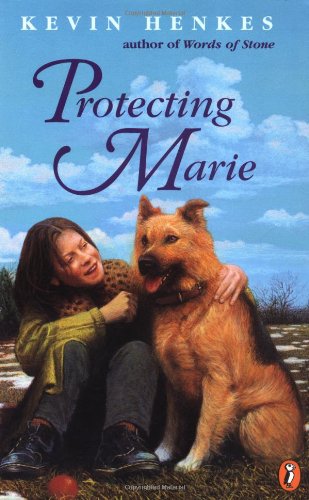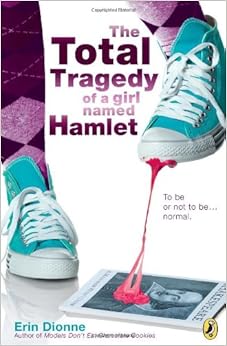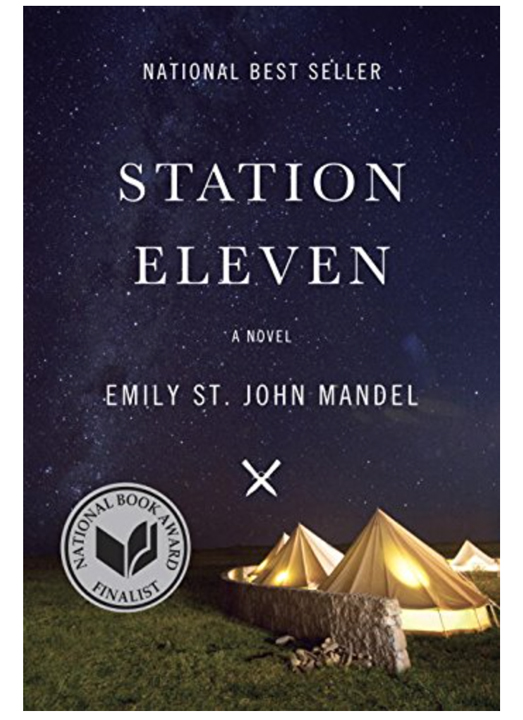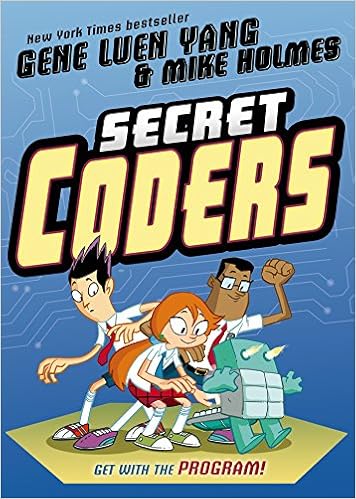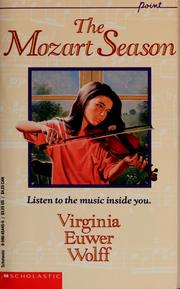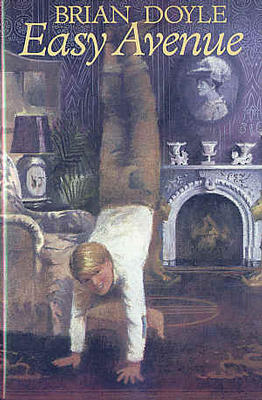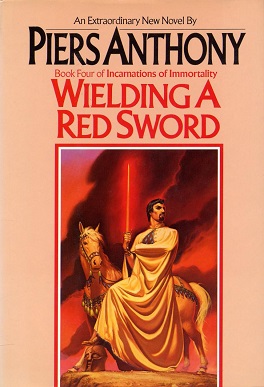Capa, Robert; Morvan, Jean-David; Trefouel, Severine (2015)
Omaha Beach on D-Day. New York: First Second.

Opening Lines: "January 27, 1944. Italian front, three miles from Cisterna di Latina. The allied troops were unable to advance, immobilized by the Wehrmacht's fierce resistance. The Americans had blanketed the area with artificial fog to hide their positions from the German artillery. I was determined to make the most of the situation."
This is not a graphic novel about the invasion on D-Day, although it includes that. This graphic novel is the story of a war photographer, Robert Capa, who went along on the D-Day invasion and got some of the best photographs of that action. Combining black-and-white comics with excellent reproductions of Capa's photographs, and including some regular-text essays, this book follows Capa through the end of the war and a bit beyond. Along the way we see him interact with everyone from common soldiers to General Eisenhower and the writer Earnest Hemingway. The book also takes an interesting digression to figure out which soldier was in the iconic photo of an American soldier swimming to the Normandy shore, pushing a life preserver in front of him.
This book will not give you a full historical and strategic overview of the invasion that turned the tide of World War Two, but it will take you deeply into one man's perspective. Although the text is a secondary source biography, the photographs reproduced in the book offer an excellent opportunity to allow history students to consider the value of photographic primary sources and the research required to fully understand them. The photos are, it must be said, spectacular.
There is plenty of smoking and drinking in this book (as there was in World War Two) and some fairly vague references to Capa's amorous affairs, but this book should be suitable for fifth or sixth grade and up and is unlikely to prompt any challenges.
If you know a child who loves World War Two, photography, or journalism, I would encourage you to get hold of this one.
Colfer, Eoin; Donkin, Andrew ((2013)
Artemis Fowl: The Eternity Code. New York: Hyperion

Opening lines: "Excerpt from Artemis Fowl's Diary, Disk 2. Encrypted. My name is Artemis Fowl and I am a genius. The last two years have been exhilarating, even by my own high standards. It had all started with the internet, but then these days, it always does."
In this adaptation of the third book in Colfer's excellent series, Artemis Fowl tries to sell a underworld investor the chance to get ahead of the market on Artemis's latest invention, a computer cube that makes smart phones look dumber than dirt. When the deal goes bad, Artemis's faithful bodyguard, Butler, takes a bullet meant for him and the criminal gets away with the cube., Artemis must enlist the help of Captain Holly Short of the Lower Elements Police Recon (that's LEPrecon); Foaly the technical genius centaur; and the flatulent dwarf, Mulch Diggums to try to get it back.
This is a rip-roaring action graphic novel, but one that requires a fair amount of thought from the reader to understand the levels of subterfuge involved in reclaiming the cube.
Though this is a violent graphic novel, it pales in comparison to the tamest violent PG 13 film. It is probably best for fourth grade and up. Artemis consistently employs logic to make his decisions, which may be useful for high school math classes doing a unit on logic.
This is a fun one. I recommend it, especially for classroom libraries.
Spender, Nick; Haynes, Stephen (2008)
Macbeth Brighton, UK: BOok House..

Opening lines: "When shall we three meet again, in thunder, lightning, or in rain? When the hurley-burley's done, when the battle's lost and won. That will be ere the set of sun. Fair is foul and foul is fair; hover through the fog and filthy air."
A couple of years ago, my amazing student Courtney R. was spending a semester in London and I asked her to keep her eyes open for any graphic novel adaptations of Shakespeare's plays. She brought back this one and inscribed it with a kind note and an apology. "Sorry if this version isn't the best."
I finally got around to reading it a week ago and I have been trying to figure out ever since whether this version is the best, the worst, or somewhere in between. The illustrations are very thoughtfully done in a way that makes them both exciting and faithful to the book. Spender favors light from fireplaces and dark shadows to give the whole play an authentic and creepy quality. And it would be a great way for students to get to know Macbeth in the way it is traditionally presented (that is to say, not with updated costumes and sets to make it look like it is taking place in Vietnam, the moon, or downtown Cleveland.)
Unfortunately, however, the creators made the choice to typeset the words rather than have them be hand-lettered in classic comic book tradition. That might not seem like a big deal, but that lettering allows the graphic novel text to carry more emotion and emphasis (even though we often don't consciously notice it when we are reading.) This version, though, will strike you as cold and sterile because of the type. The other drawback is that in this adaptation they have cut out Lady Macbeth's speech about being determined enough in the murders to "rip the babe from her breast" and also the gatekeeper's speech about the effects of drink. While that makes it easier to put this version in your classroom library without fear of a parental challenge, it leaves out two scenes that are considered by many to be important parts of Shakespeare's play.
If you are teaching Macbeth, I would encourage you to have a look at this version. It may be a very helpful tool for you.
Gownley, Jimmy (2006)
Amelia Rules: What makes You Happy and
Amelia Rules: Superheroes. New York: Atheneum.

Opening lines: "It's weird... In a way, I can't believe fourth grade is over. But on the other hand, I can't believe it took so long. Every day you sit in class and the clock seems to stand still. Then one day you look behind you and wonder where it all went."
First, a clarification. This is not the same Amelia who graces the pages of Melissa Moss's excellent Amelia's Notebook series. There are some great things about this Amelia. She is plucky, we get to share her frustration with some aspects of life, and she is sometimes funny, The artist draws her in a way that makes her seem like a pretty sympathetic eight-year-old.
At the same time, there are some things about this series that give me pause. While Gownley doesn't quite go the way of the Marvel Superheroines overly busty forms, he does have a penchant for showing teenage female belly buttons and some of the scenes he favors are, well, a little odd.
Amelia Rules!: Superheros, for example, opens with a daydream sequence in which one character, Reggie Gabrinski,, imagines he is a superhero named MiracleReggie and is fighting Space Ninjas. When it looks like he is on the ropes, he sends a psychic distress call and a female superhero in a miniskirt and crop top comes to the rescue. After she defeats the villains, Reggie suggests that it is smootchy time. Now, all this is perfectly in line with the average adolescent boy's fantasy world I suppose, including the fact that the woman whom his fantasy is centered upon is his teacher, but honestly, it is a little creepy.
If that were an isolated thing I would let it go. But soon after that we see Amelia's mom in a short nightshirt and then a little while after that young Amelia imagines herself as a sixteen-year old wearing (wait for it) a crop top and a belly button ring. After a while, there seems to be a certain sort of inevitability to it. Like all females should dream of growing from awkward eight-year-olds to shapely, scantily clad bombshells.
Maybe I am being oversensitive (as the dad of two daughters who I want to have a wide variety of options for their lives), but because of this, I would take a pass on this series.
White, Kiersten; Di Bartolo, Jim (2014)
In the Shadows New York: Scholastic.

Opening Lines: Um, the first 33 pages are images with no text, so I would have to say it doesn't exactly have opening lines.
When my friend Kris gives me a book and tells me to read it, I do. She teaches middle school and was the one who introduced me to the amazing work of Adam Rex. When she told me to read this one, I did., even though it didn't look like the sort of thing I would like.
In the Shadows is an excellent example of something that isn't exactly a graphic novel, but I am not quite sure what I should call it. A hybrid, maybe? It tells the story in much the way Brian Selznick does in
The Invention of Hugo Cabret. It alternates between a series of single page illustrations that tell the story, to chapters that are just text. Some books written this way can be jarring as you move from comprehending images to comprehending text.
The story of this one is complicated. A group of rich people gather in an old mansion on a stormy night. They have captured a baby demon who grants them impossibly long life. When an intruder tries to stop them, He sets in motion a conflict that will continue through several lifetimes. As we alternate from time period to time period, we gradually get more and more of the story and come to understand the most recent situation where the man who opposes the demon captors takes two young people into his confidence and involves them in a tremendous final struggle.
Though I am not a big fan of horror, this is a very readable book and might be an excellent choice for middle school teachers that want to give struggling students the experience of completing a fairly lengthy book without having to read that much text. This is also a book that encourages rereading. Teachers should preview it, however, to get a sense for how to describe the book to potential readers who might be put off by the occultish parts.






